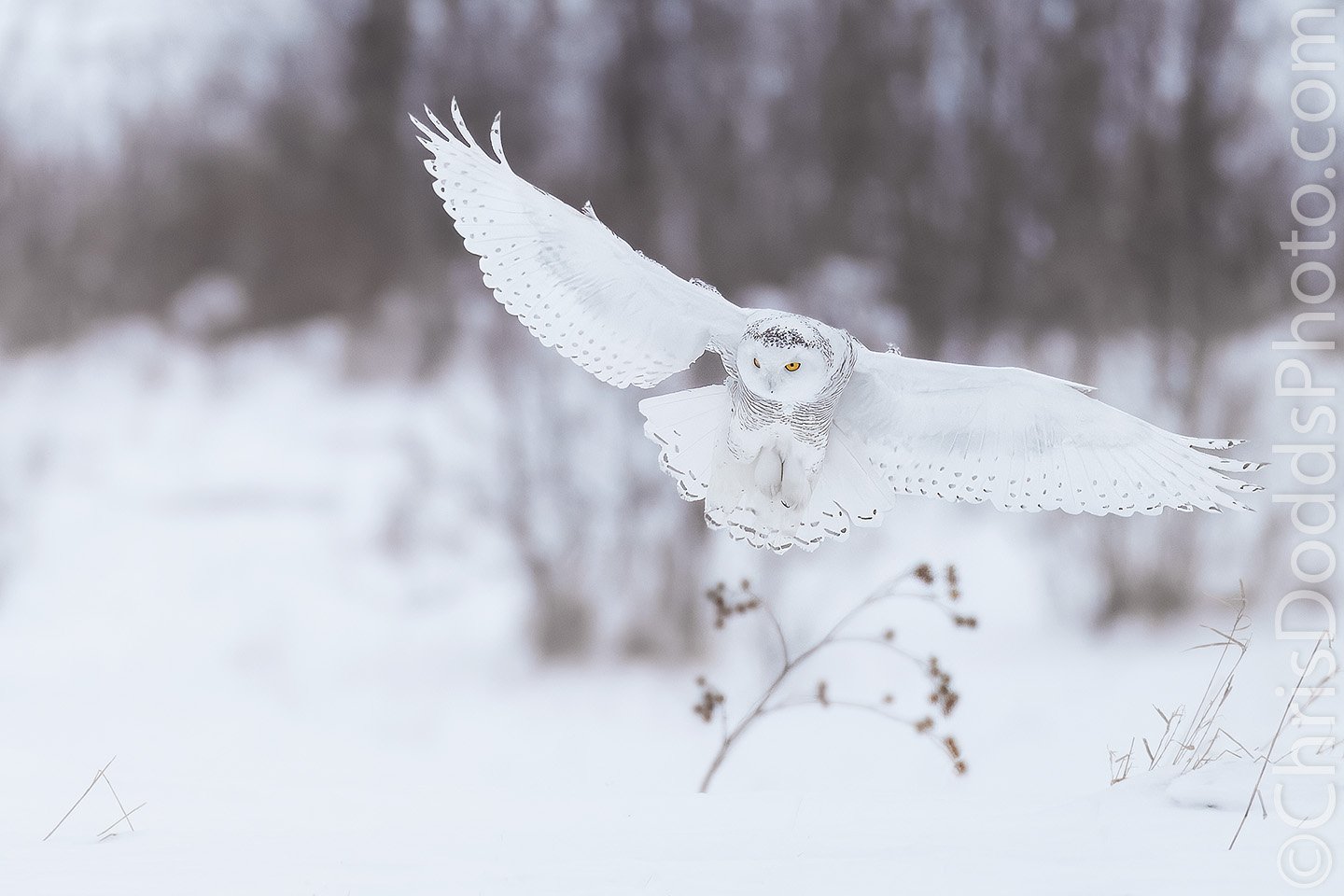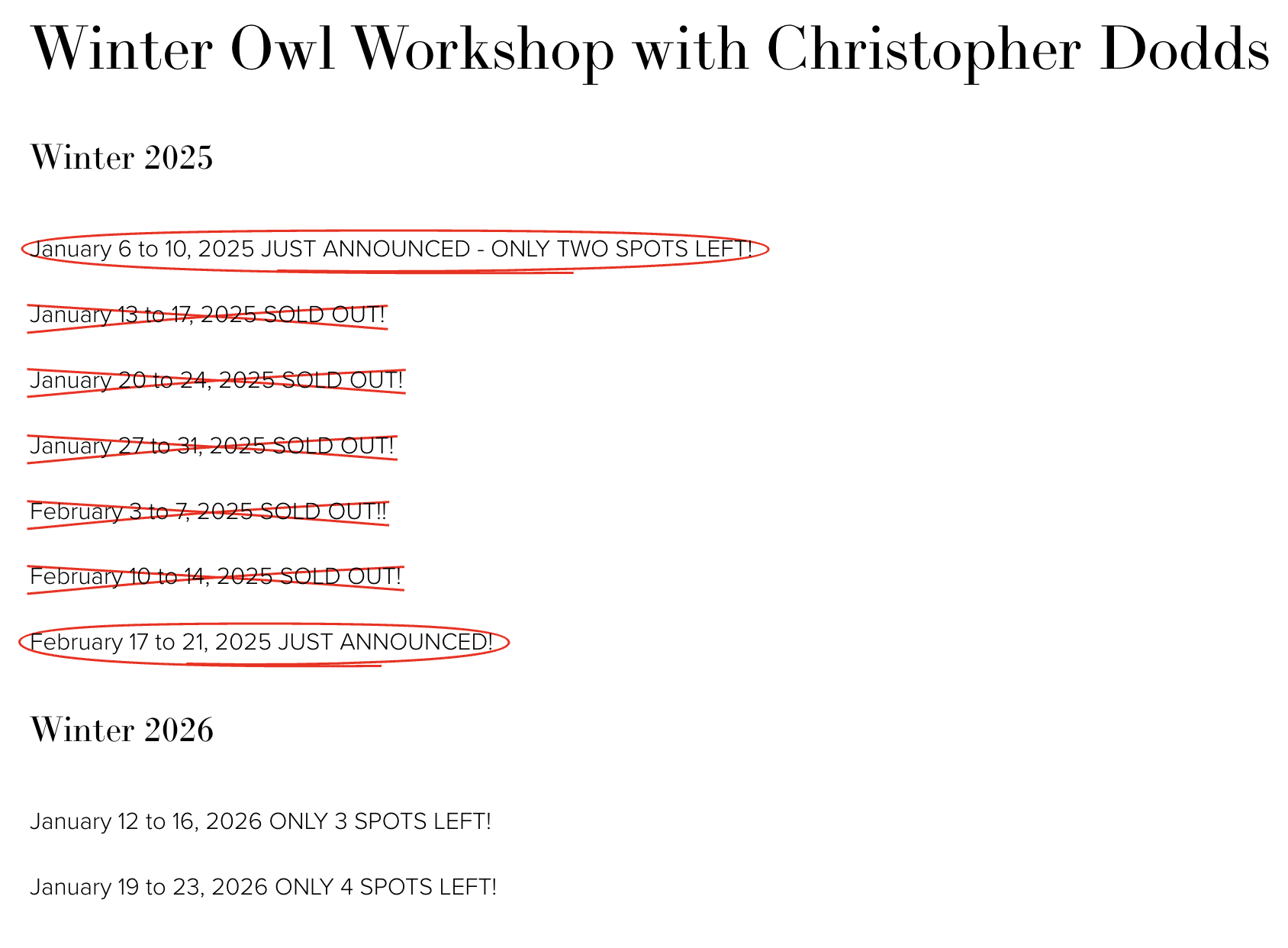This American Kestrel kept distracting us while watching a Snowy Owl during my recent Snowy Owl Workshops. It had flown past us and offered a nice view against the white “cloudy bright” sky, but I stayed on the bird in case it banked around. I was treated to this full dorsal view as it banked around in front of some out-of-focus pine trees, which proved a perfect background.
American Kestrel Landing (Falco sparverius, Crécerelle d'Amérique, AMKE) Ontario, Canada, during my recent Winter Owl Workshops. Image Copyright ©Christopher Dodds. Sony a9 Mark III Mirrorless camera & Sony FE 600mm f/4 G Master OSS Lens with Sony FE 2X Teleconverter @1,200mm ISO 5,000, f/8 @ 1/5,000s Manual exposure.



























